Expert Care Tips and Problem Solutions from an Experienced British Grower
The Peruvian Lily: Britain’s Perfect Perennial
Alstroemeria, also known as Peruvian lilies or Lily of the Incas, are spectacular fleshy-rooted herbaceous perennials that bring months of vibrant colour to garden borders. Native to South America, alstroemeria produce magnificent lily-like blooms in a wide range of colours, often featuring captivating speckles and streaks that make each flower truly unique and beautiful. At Cade Street Nursery we grow over 2000 of these plants every year and have been growing them for over 6 years now. Throughout this time, we’ve not only developed our own extensive growing experience but have also gathered valuable insights from our customers, who grow our plants, to create this handy guide to growing alstroemeria successfully.
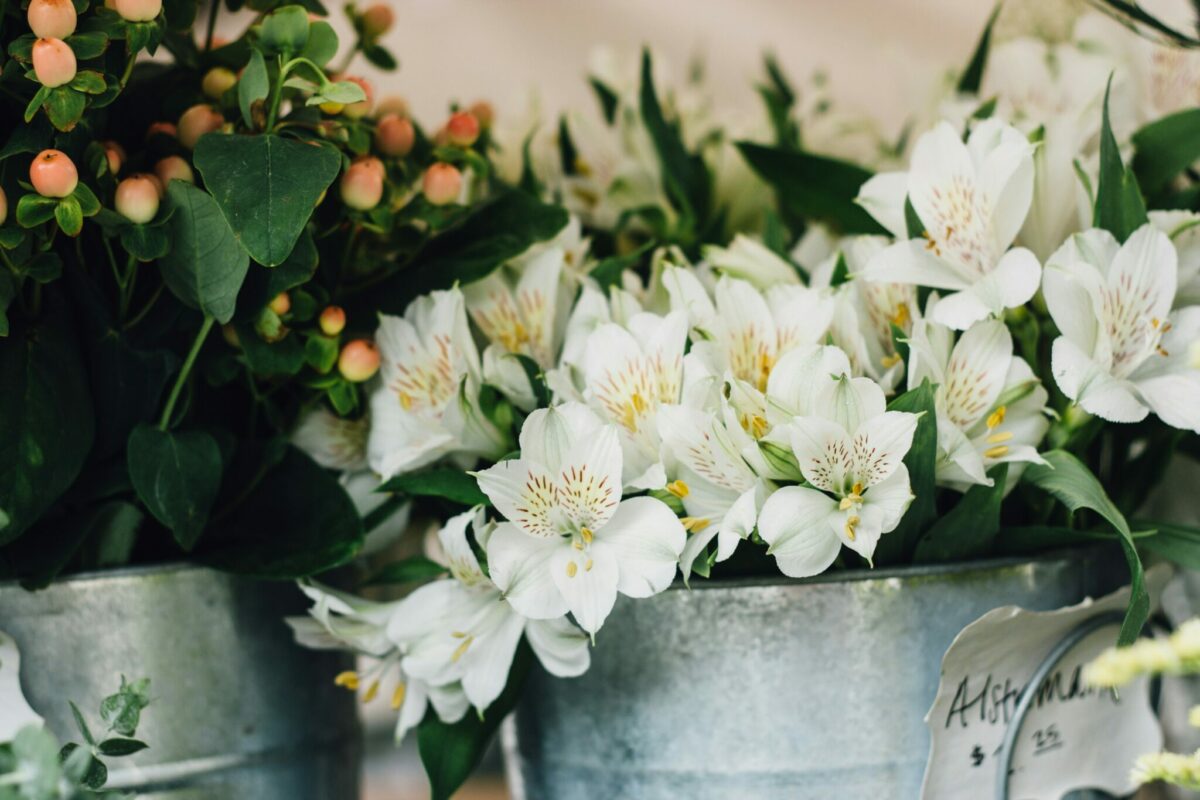
Soil Requirements: Solutions for Every Garden
While alstroemerias are adaptable, they thrive best in:
- Free-draining soil that never becomes waterlogged (critical for preventing root rot)
- Rich soil with plenty of organic matter to retain moisture without becoming soggy
- Neutral to slightly acidic conditions (though they can tolerate chalk with amendments)
Solutions for Different UK Soils:
Acid Soil: Alstroemerias will thrive naturally—perfect for gardens where rhododendrons and camellias do well.
Chalky or Alkaline Soil: Incorporate plenty of garden compost or well-rotted manure to improve structure and fertility. Raised beds or growing in pots offer better drainage and soil control in challenging sites.
Clay Soil: Add grit and organic matter to improve drainage. Consider planting on slight mounds to prevent winter waterlogging.
Sandy Soil: Add organic matter to improve water retention and nutrient levels. Mulch well to conserve moisture in summer.
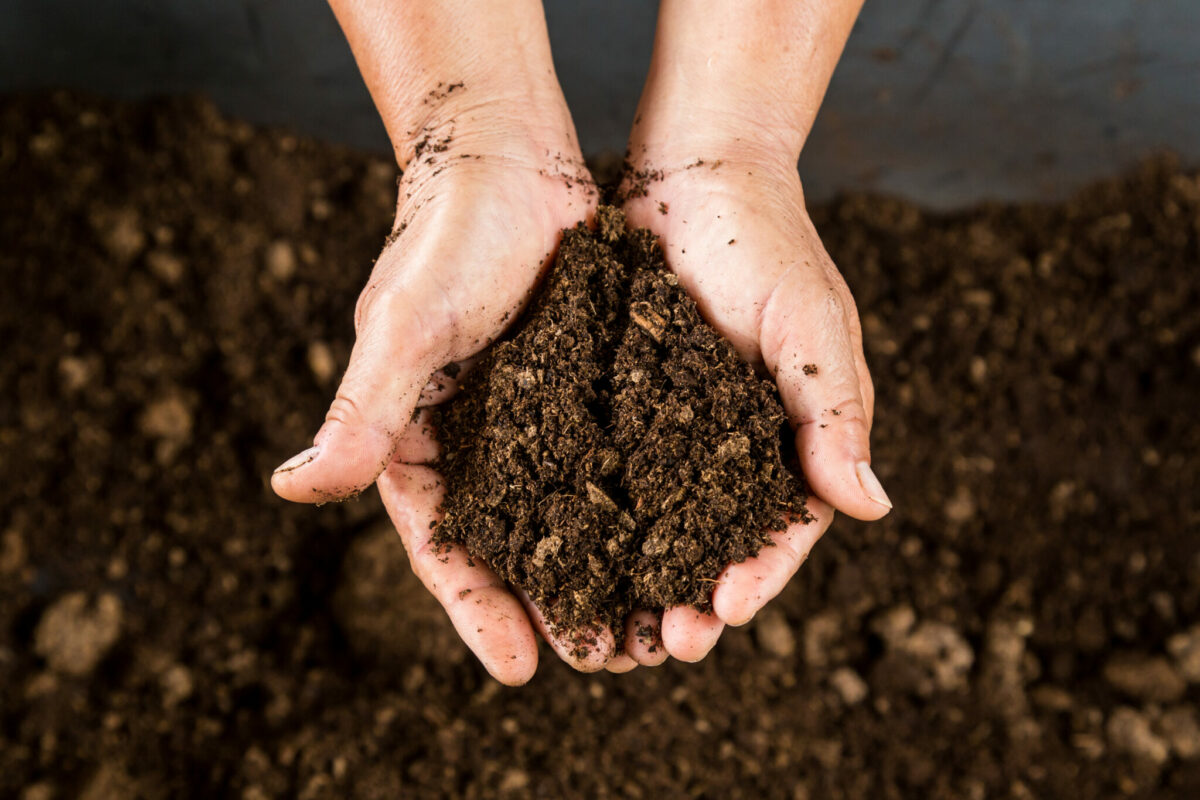
Container Growing: Mastering Alstroemeria in Pots
Container growing is extremely popular for alstroemeria, especially in gardens with challenging soil or limited space. These versatile plants perform beautifully in pots when given proper care. Ensure the pot you are using is large enough to keep the plants moist in warm weather.
Our Container Growing Advice:
- Choosing Containers: Select generous pots at least 30-40cm deep with excellent drainage holes
- Potting Medium: Use high-quality John Innes No.2 compost with added grit (approximately 20% by volume) to ensure perfect drainage
- When to Repot: Move to final containers when roots begin appearing through drainage holes but before becoming severely root-bound (typically early in the growing season)
- Timing: Spring or early summer is ideal for repotting when plants are in active growth
- Container Care: Position in a sunny, sheltered spot and move to a frost-free location during winter as there is less protection from frost for the roots of plants grown in pots
- Maintenance: Container-grown plants need more frequent watering and feeding than those in borders
Container Growing Tip: In windy locations or exposed gardens choose heavier terracotta or stone containers that won’t topple when your alstroemerias reach their full height and bloom. Consider adding a plant support before the stems grow too tall.
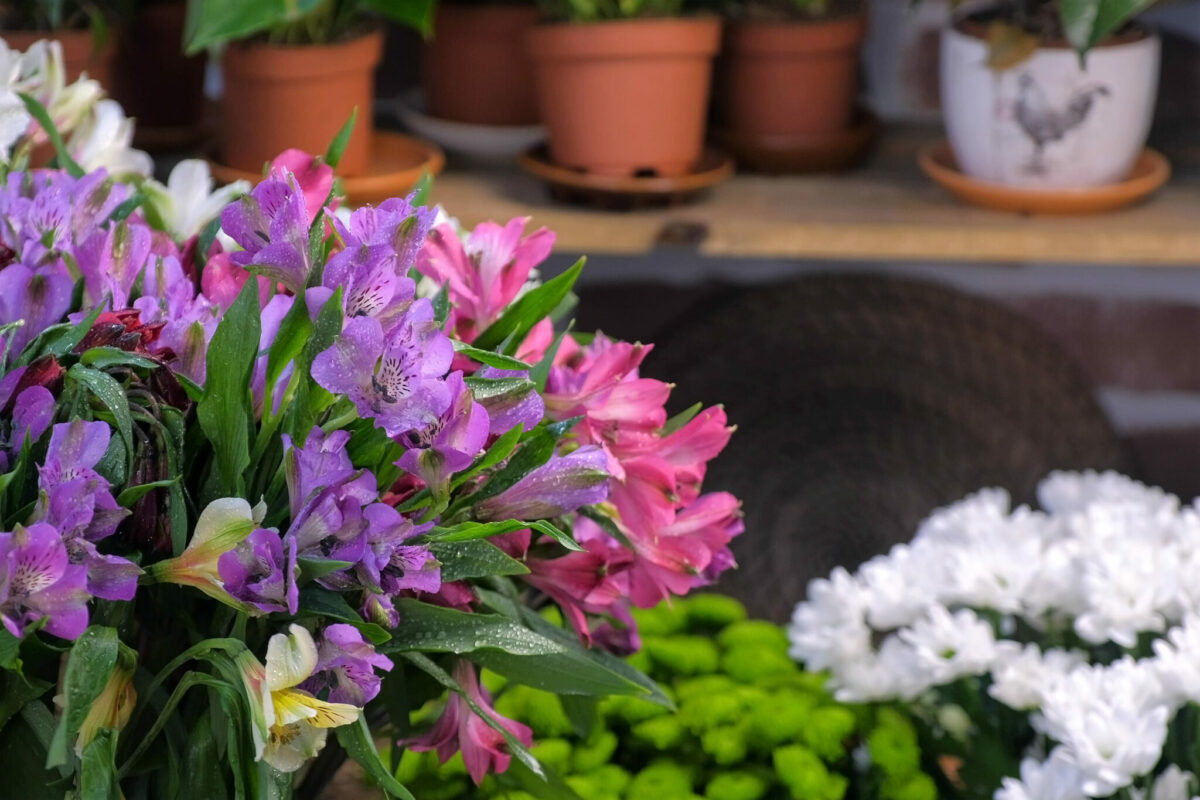
Seasonal Care Calendar for UK Alstroemeria Growers
Spring (March-May)
- Planting Time: Ideal season for establishing new plants when the soil is warming
- Division: April is perfect for dividing established clumps (3+ years old)
- Emerging Growth: Protect tender new shoots from late frosts and hungry slugs/snails
- Support: Install stakes or supports for taller varieties before they reach full height
- Feeding: Begin regular feeding with high-potash fertilizer as growth accelerates
Summer (June-August)
- Watering: Provide consistent moisture during dry spells to prolong flowering
- Harvesting: Pull (don’t cut) flower stems from the base to encourage more blooms
- Feeding: Continue weekly applications of liquid plant feed for continuous flowering
- Deadheading: Remove spent flower stems completely to stimulate new flower production (remember don’t cut the stems always pull them from the base, this stimulates new stem growth)
Autumn (September-November)
- Planting: Second ideal window for establishing new plants
- Mulching: Apply thick protective mulch (20cm of composted bark) around root zones
- Container Protection: Move potted specimens to sheltered locations
- Last Blooms: Continue harvesting late flowers until first frosts
Winter (December-February)
- Dormancy: Plants naturally die back—don’t panic when foliage disappears!
- Container Care: Keep potted plants in frost-free locations with minimal watering
- Protection: Ensure winter mulch remains in place during severe weather
- Planning: Browse our nursery catalogue for new varieties to add in spring
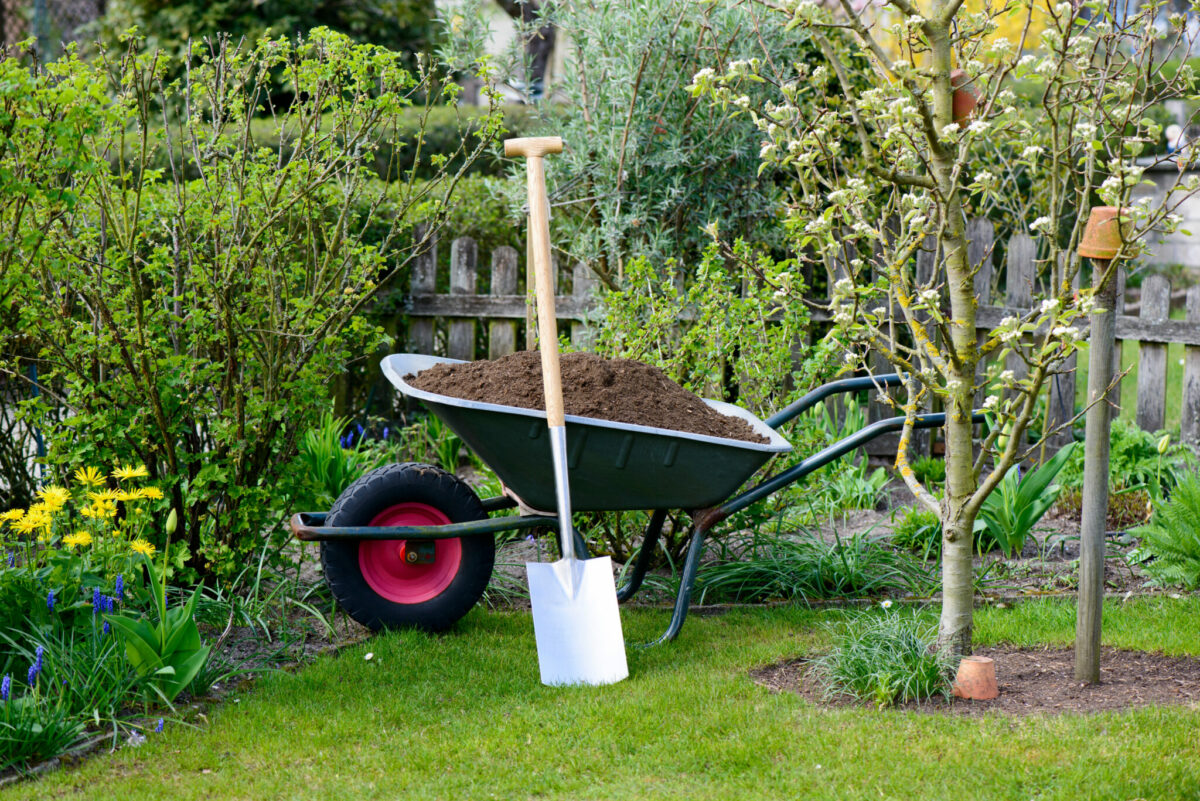
Winter Care: Indoor vs Outdoor?
A common winter concern among British gardeners is: “My alstroemeria was doing really well before I brought it inside for winter! Why is it dying?!”
The surprising reply: “Mine stays outdoors in a very cold windy garden all year and it’s enormous.”
This highlights a crucial point: many alstroemeria varieties are naturally dormant in winter, and bringing them indoors can disrupt this cycle.
UK Winter Strategy:
- Most established border alstroemerias survive UK winters perfectly when planted at proper depth (15-20cm)
- First-year plants benefit from extra protection—apply thick mulch (20cm of composted bark) in late autumn
- For container specimens, move to a sheltered location such as an unheated greenhouse, cold frame, or against a protected wall
- If bringing containers indoors, choose a cool, bright location and dramatically reduce watering
- Remember: winter dieback is normal—don’t assume your plant has died when foliage disappears
- In more northern regions or particularly exposed gardens, select hardier varieties like Alstroemeria Indian Summer
Did you know that Alstroemeria is considered the ‘friendship flower’? Celebrate each year with International Friendship Day on 30th July
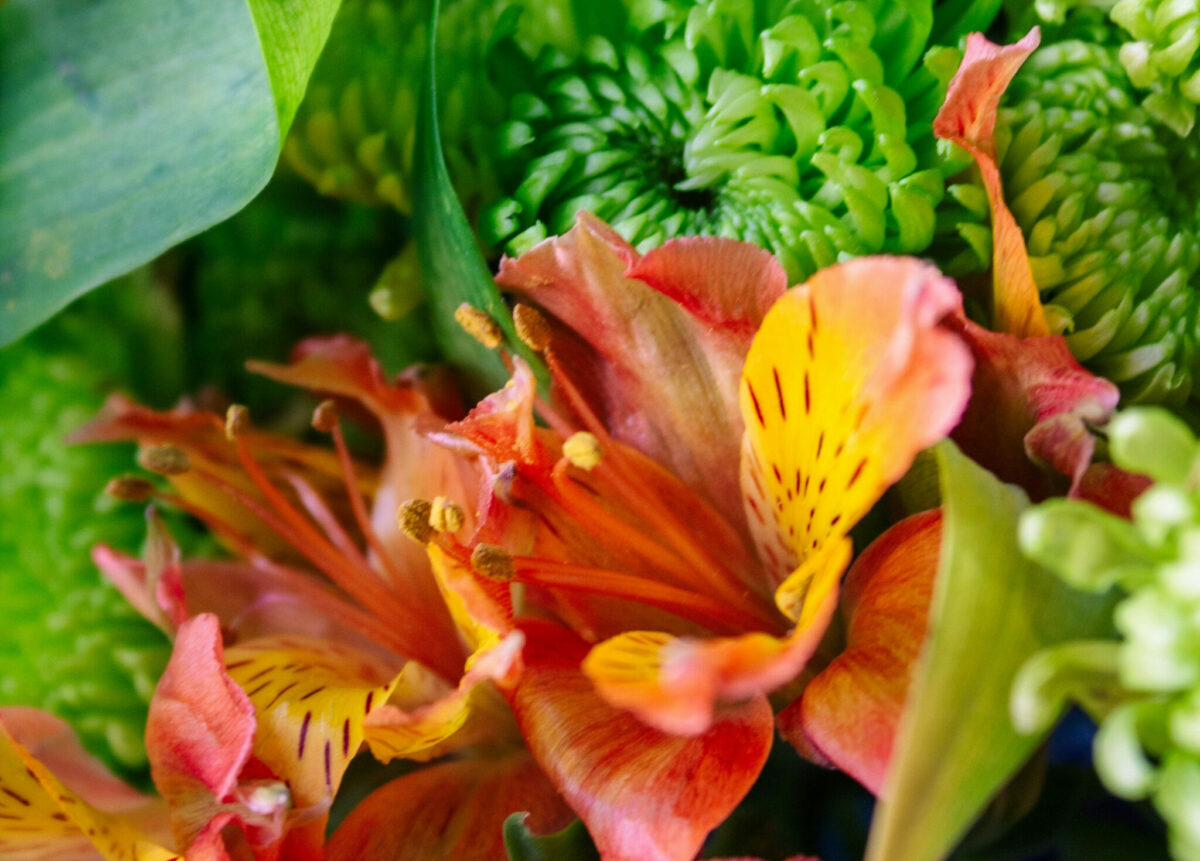
Variety Selection: Finding Your Perfect Alstroemeria
At Cade Street Nursery, we specialise in curating alstroemeria varieties that thrive in various UK growing conditions. Our collection features options for every garden style, exposure level, and soil type.
Height and Form Considerations
- Dwarf Varieties (15-30cm): Perfect for containers, front of borders, and small gardens. We grow the ‘Valley’ series- compact and hardy.
- Medium Varieties (30-60cm): Ideal for middle positions in mixed borders. Some varieties from the ‘Valley’ series and ‘Summer’ series fit this bracket.
- Tall Varieties (60-100cm+): Statement plants for the back of borders and cutting gardens. Our most popular varieties are the ‘Summer’ series all of which are at least 50cm tall when fully grown.
Flower Colour Spectrum
Alstroemeria flowers come in virtually every colour except true blue, often with intricate markings:
- Warm Tones: Sunset oranges, fiery reds, golden yellows
- Cool Tones: Soft pinks, crisp whites, rich purples
- Bicolors: Striking combinations with speckles, streaks and contrasting edges
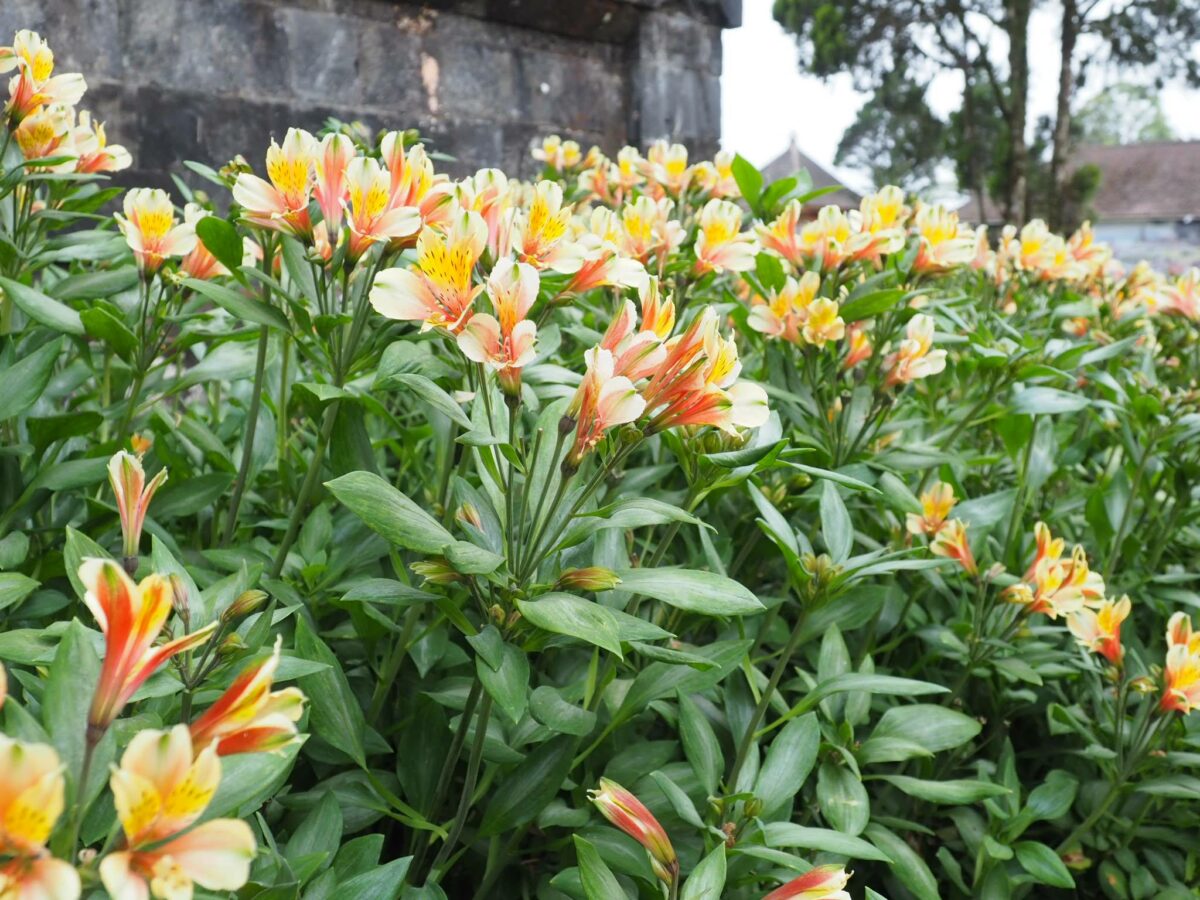
Varieties for UK Gardens available at Cade Street Nursery:
Summer Series:
- Alstroemeria ‘Indian Summer’: Rich orange-red blooms with bronze foliage, thrives in partial shade, excellent for woodland edges
- Alstroemeria ‘Summer Break’: Stunning pink-tipped blooms with ivory center. This variety is extra hardy and has a long flowering season
- Alstroemeria ‘Summer Chic’ – Bright Pink flowers all summer long, starting flowering from June onward.
- Alstroemeria ‘Summer Heat’ – This bushy plant produces an abundance of striking red flowers, each decorated in the center with bright yellow stamens
- Alstroemeria ‘Summer Rose’ – Bright Pink flowers all summer long, starting flowering from June onward.
- Alstroemeria ‘Summer Ice‘ – Creamy-white flowers, the inner petals flushed pale yellow and speckled dark brown, flowering in summer and autumn.
- Alstroemeria ‘Summer Breeze‘ – Superb hardiness, a long flowering window, these plants have real presence in the garden, either in the border or in a pot
Valley Series:
- Alstroemeria ‘ Valley Girl’: Compact ‘Valley Girl’ with vibrant coral-peach blooms, provide an unbroken display of flowers from May to November. Great for edges of the border.
- Alstroemeria ‘Spring Valley‘ – Compact garden Alstroemeria and the smaller sister of the Summer Series. The plants will produce an unbroken display of flowers from May until November
- Alstroemeria ‘Beach Valley’ – The Valley Series is a compact garden Alstroemeria and the smaller sister of the Summer Series. The plants will produce an unbroken display of flowers from May until November.
- Alstroemeria ‘Times Valley’ – The Valley Series is a compact garden Alstroemeria and the smaller sister of the Summer Series. The plants will produce an unbroken display of flowers from May until November.
Collection: Visit our nursery or online shop to explore our complete collection of alstroemeria varieties, all trialled and proven in diverse UK growing conditions.
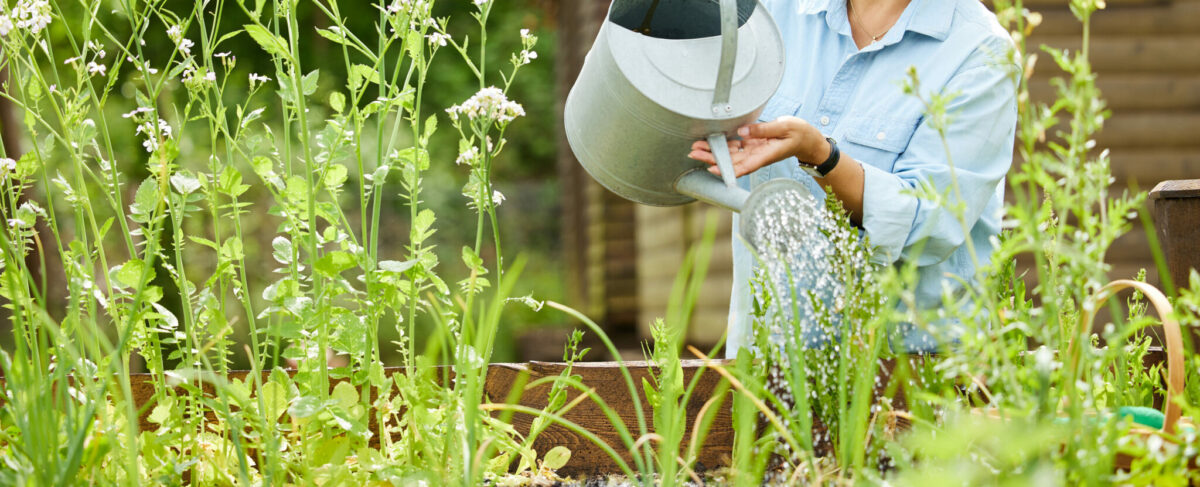
Expert Propagation Techniques
One of the joys of alstroemeria is how easily established plants can be multiplied to expand your collection or share with fellow gardeners.
Division Method (Our Recommended Approach)
Alstroemeria division requires careful handling due to their delicate tuberous roots. When considering dividing plants always check whether the variety is covered by Plants Breeders rights. If the plant is covered, this means that it cannot be legally divided or propagated except with permission of the breeder.
- Timing: April is ideal—when new growth is just beginning but before plants get too tall
- Preparation: Water thoroughly the day before to minimize stress
- Extraction: Carefully dig around the entire clump, working at least 30cm from the stems
- Division: Gently separate the clump into sections, ensuring each division has several growth points
- Immediate Planting: Replant divisions immediately to prevent roots from drying out
- Aftercare: Water well and provide temporary shade if the weather is warm
Pro Tip: Rather than attempting to separate every tuber (which can damage them), divide them into generous clumps with multiple growing points for best results.
Growing from Seed
While more challenging and time-consuming than division, growing alstroemeria from seed can be rewarding. However, due to the challenges, time taken to establish a garden sized plant we don’t recommend this form of propagation.
- Seed Collection: If allowing some flowers to set seed, collect pods as they turn brown
- Sowing Time: Fresh seed germinates best, ideally sown in autumn
- Temperature Requirements: Seeds need specific temperature cycling—warm (20°C) followed by cold (5°C) and warm again
- Patience Required: Expect seedlings to take 2-3 years to reach flowering size
- Variation: Seedlings may differ from parent plants, offering exciting new variations
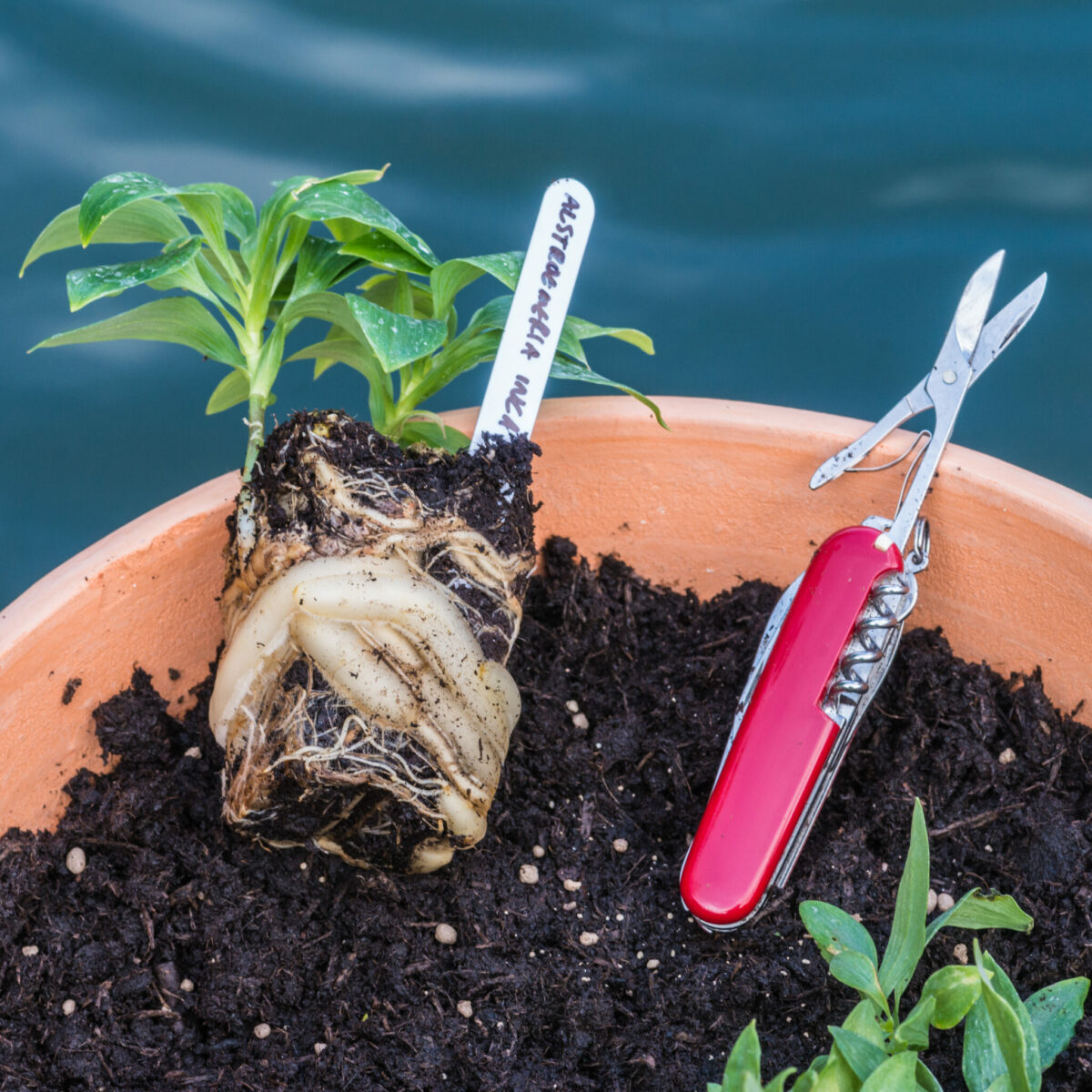
Troubleshooting: Common Alstroemeria Problems & Solutions
1. Failure to Bloom
- Problem: Healthy foliage but no flowers
- Causes: Insufficient light, excess nitrogen, immature plants, improper dormancy
- Solutions:
- Ensure plants receive at least 6 hours of sunlight daily
- Switch to high-potash, low-nitrogen fertilizer (tomato feed is perfect)
- Be patient with young plants—they may need 2 years to bloom well
- Ensure proper winter dormancy cycle for energy conservation
2. Yellowing Leaves
- Problem: Leaves turning yellow and dying back prematurely
- Causes: Overwatering, poor drainage, natural dormancy beginning, nutrient deficiency, exposure to cold conditions.
- Solutions:
- Check drainage and improve if necessary
- Adjust watering schedule—allow soil to dry slightly between waterings
- If occurring in autumn, likely normal dormancy onset
- Consider soil test if persistent during peak growing season
- Protect spring growth from late frosts
3. Winter Dieback Confusion
- Problem: Plant appears to die completely in winter
- Cause: Natural dormancy cycle—many varieties disappear completely
- Solution: Patience! Mark the location and wait for spring regrowth
- Prevention: Apply winter mulch to protect dormant roots
4. Leggy Growth
- Problem: Sparse, stretched stems with few flowers
- Causes: Insufficient light, overcrowding, excess nitrogen
- Solutions:
- Relocate to a sunnier position if possible
- Divide overcrowded clumps in spring
- Reduce nitrogen-rich fertilizers
- Try the “Chelsea chop” technique in late May (cutting back by 1/3) to encourage branching
5. Root Rot Issues
- Problem: Soft, blackened roots and general plant decline
- Causes: Poor drainage, overwatering, heavy clay soil
- Solutions:
- Improve drainage immediately
- Consider raised beds or containers if growing in problematic soils
- Remove affected plants and replant in fresh, well-draining soil
Alstroemeria as Cut Flowers: The Florist’s Favourite
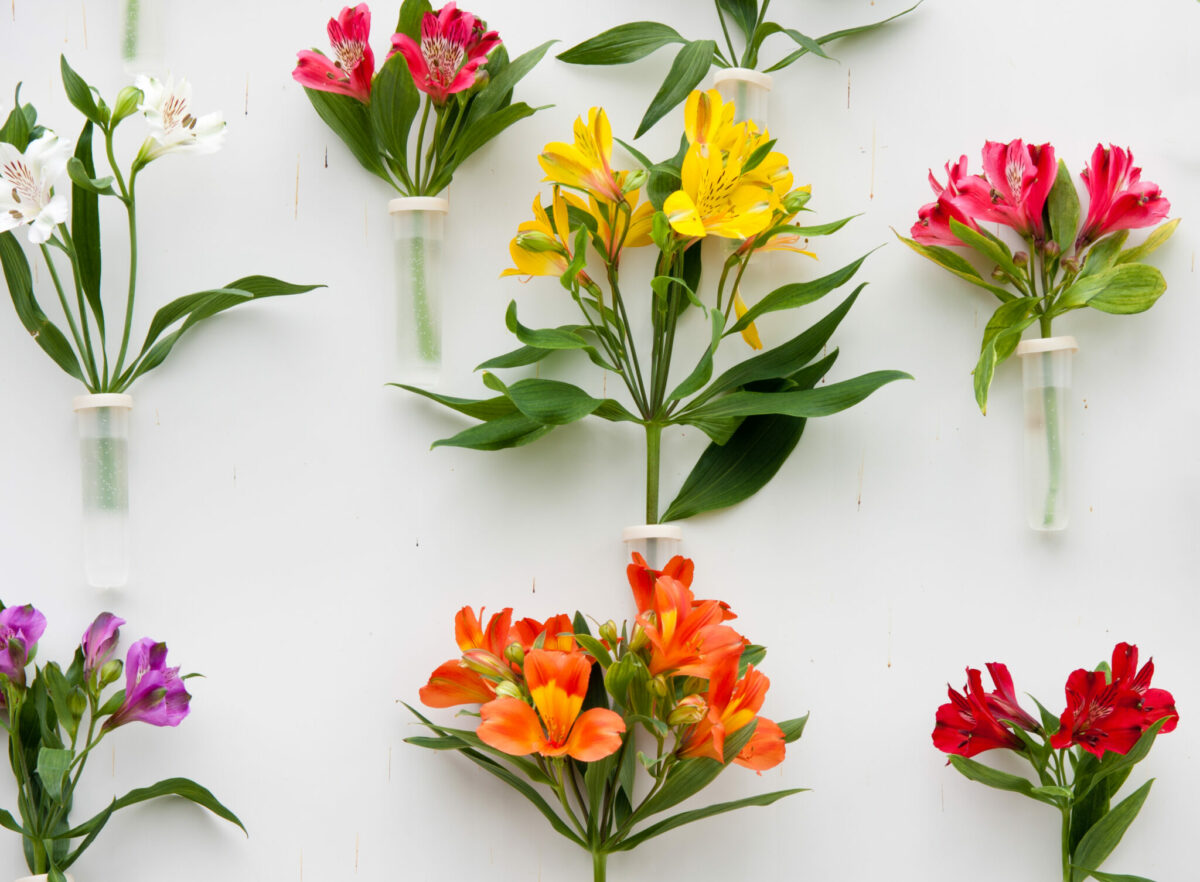
Our on-site florist Lucy says “They are always the cut flower I am drawn to because they last so long.”
This highlights one of the alstroemeria’s greatest attributes—their exceptional performance as cut flowers. A well-harvested stem can remain fresh during 2-3 weeks in a vase, far outlasting most other garden flowers.
Professional Florist Harvesting Technique
The proper harvesting method makes all the difference:
- Pull, Don’t Cut: Grasp the stem low down and pull upward with a quick, firm tug
- Below-Ground Separation: This specialized technique removes the stem below the soil level
- Stimulates Regrowth: The gentle trauma stimulates the plant to produce more flowering stems
First-Year Exception: For newly planted specimens, cut rather than pull for the first season
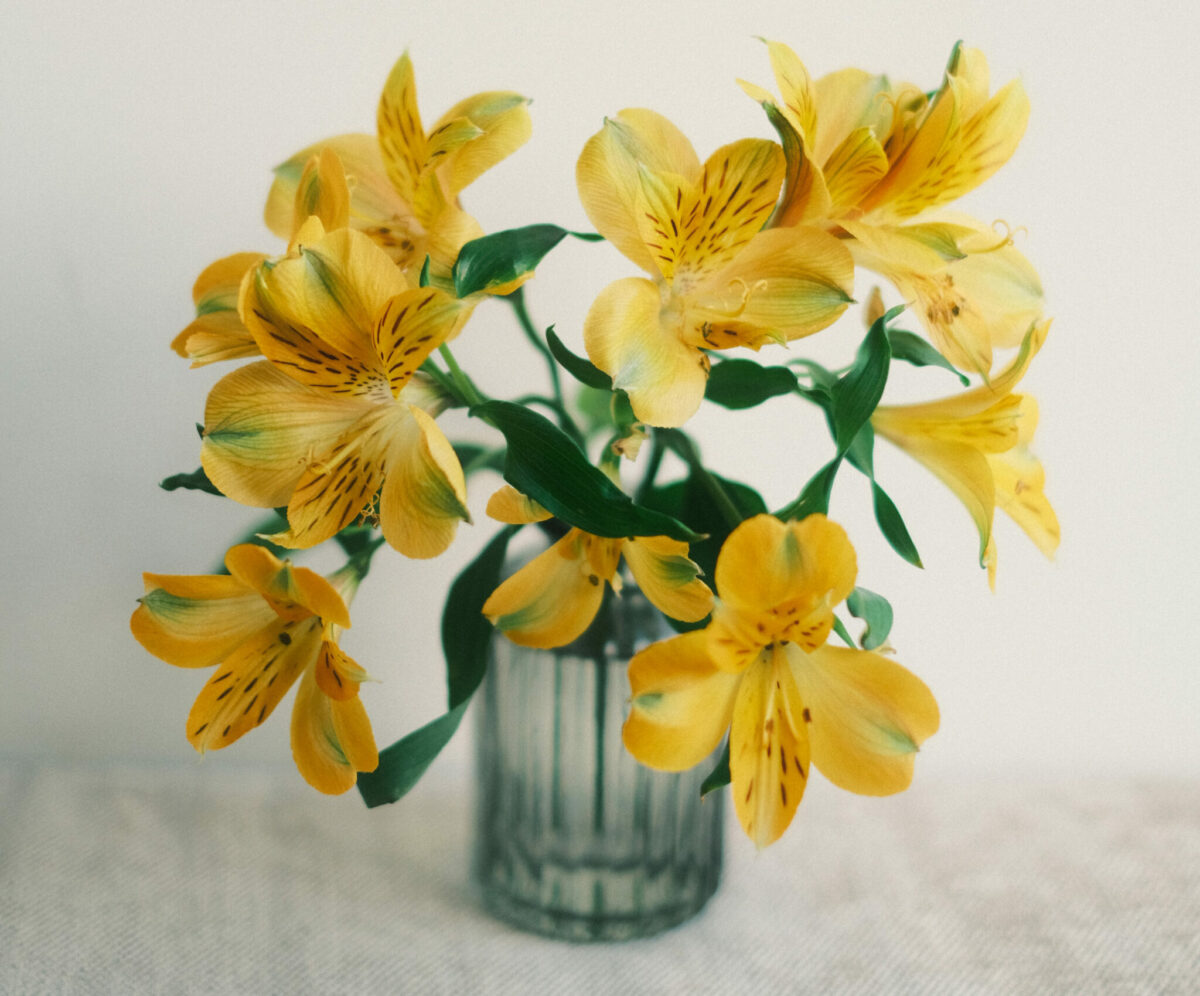
Maximising Vase Life
Follow these professional florist secrets for weeks of beautiful blooms:
- Harvest when flowers are just beginning to open (never fully mature)
- Remove all foliage that would sit below the waterline
- Use clean vases and fresh, room-temperature water
- Change water every 2-3 days to prevent bacterial growth
- Add commercial flower preservative or make your own (1 tsp sugar + a few drops bleach per litre)
- Keep arrangements away from ripening fruit (ethylene gas producers)
- Position arrangements away from direct sunlight and heat sources
- For maximum longevity, place in a cool location overnight
Creating the Perfect Alstroemeria Display Garden
Alstroemerias shine in many garden settings, but these design approaches showcase them particularly well. Consider what may suit your garden best:
Cottage Garden Integration
- Pair with roses, peonies, and nepeta for romantic summer combinations
- Mix heights and colours for a natural, abundant look
- Plant in groups of 3-5 for natural-looking drifts
Contemporary Minimalist Settings
- Mass-plant single varieties for a dramatic impact
- Combine with ornamental grasses for textural contrast
- Choose varieties with coloured foliage for year-round interest
Container Collections
- Create stunning patio displays with compact varieties like Summer Paradise Beach Valley
- Mix different colours in large containers for an extended season of interest
- Position containers near seating areas to enjoy the intricate flower details
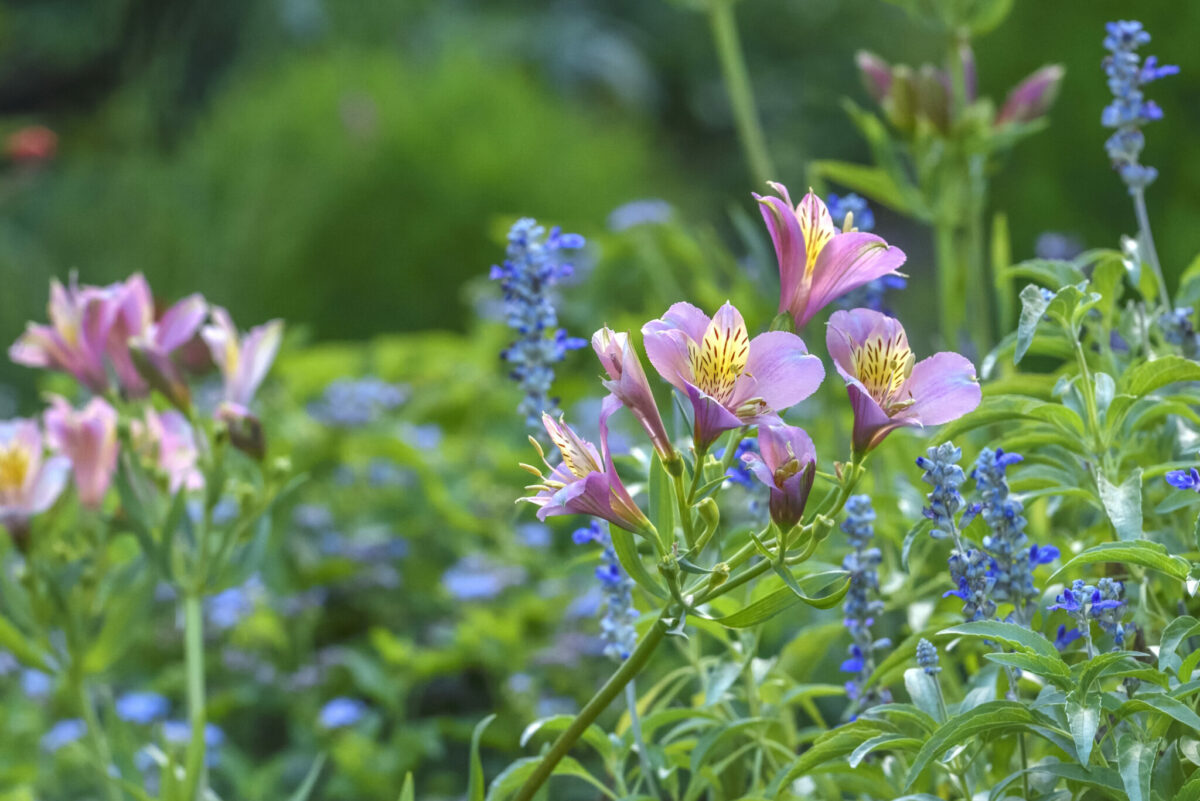
Why Choose Cade Street Nursery for Your Alstroemeria?
At Cade Street Nursery, we’re not just plant sellers—we’re passionate alstroemeria specialists with years of growing experience in Britain’s diverse conditions.
Our Alstroemeria Difference
- UK Grown: All our plants are grown on-site, ensuring they’re perfectly adapted to British conditions.
- Unmatched Selection: We’ve trialled many varieties so that the ones in our catalogue are sure to perform in every UK garden.
- Expert Growing Advice: Our knowledgeable staff can provide personalised recommendations based on your specific garden conditions.
- Quality Guarantee: All plants are supplied in generous 3L pots with established root systems for successful transplanting. We supply large garden ready plants rather than small ‘plug’ plants that need growing on in the greenhouse.
Visit Our Alstroemeria Collection in our retail shop
Explore our comprehensive collection of these stunning perennials at our nursery in Cade Street, Heathfield.
Open: Monday – Saturday, 9am-5pm, January to December
Can’t visit in person? Browse our complete alstroemeria collection online here for delivery throughout the UK.
